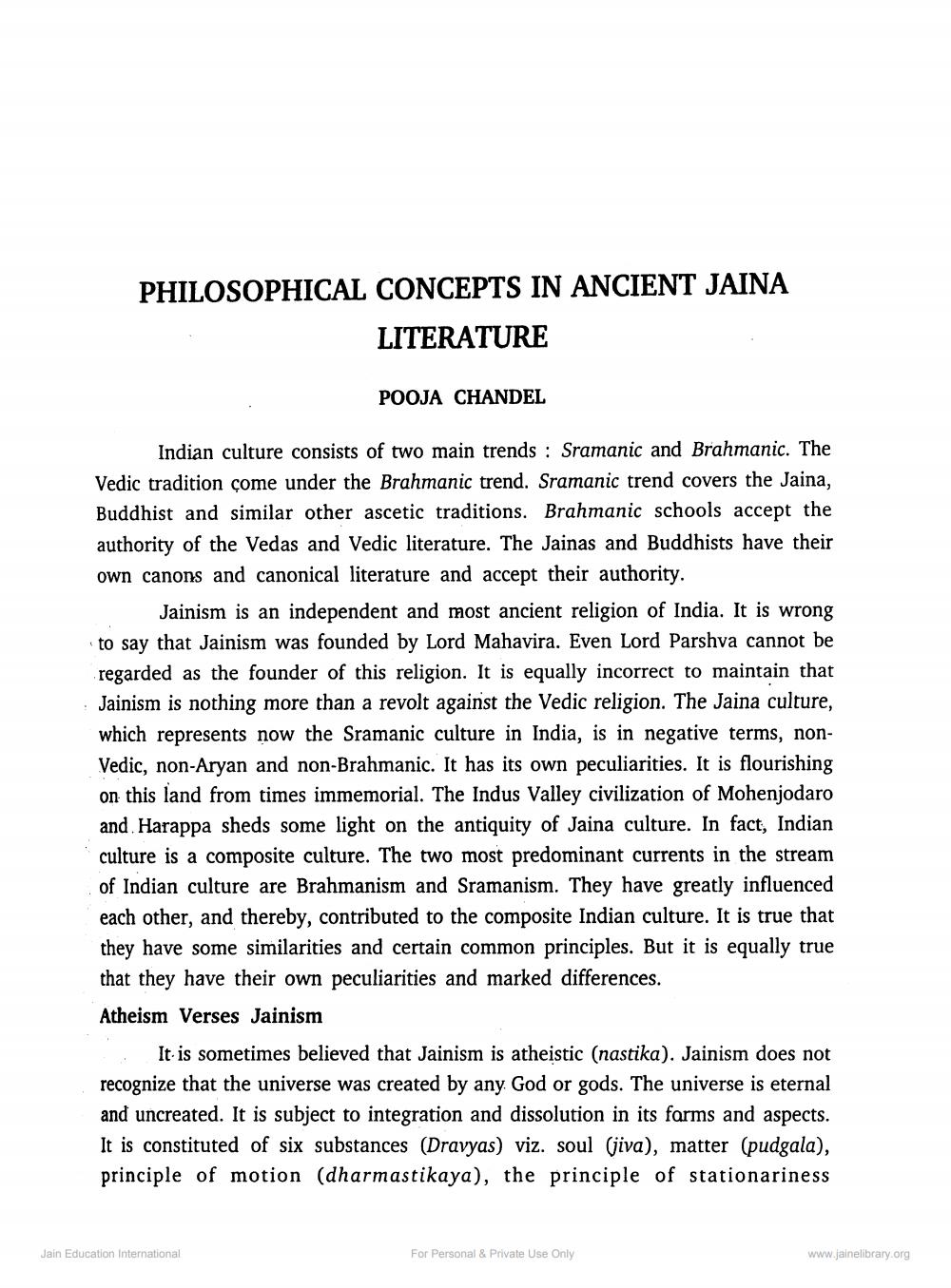________________
PHILOSOPHICAL CONCEPTS IN ANCIENT JAINA
LITERATURE
POOJA CHANDEL
Indian culture consists of two main trends : Sramanic and Brahmanic. The Vedic tradition come under the Brahmanic trend. Sramanic trend covers the Jaina, Buddhist and similar other ascetic traditions. Brahmanic schools accept the authority of the Vedas and Vedic literature. The Jainas and Buddhists have their own canons and canonical literature and accept their authority.
Jainism is an independent and most ancient religion of India. It is wrong to say that Jainism was founded by Lord Mahavira. Even Lord Parshva cannot be regarded as the founder of this religion. It is equally incorrect to maintain that Jainism is nothing more than a revolt against the Vedic religion. The Jaina culture, which represents now the Sramanic culture in India, is in negative terms, nonVedic, non-Aryan and non-Brahmanic. It has its own peculiarities. It is flourishing on this land from times immemorial. The Indus Valley civilization of Mohenjodaro and Harappa sheds some light on the antiquity of Jaina culture. In fact, Indian culture is a composite culture. The two most predominant currents in the stream of Indian culture are Brahmanism and Sramanism. They have greatly influenced each other, and thereby, contributed to the composite Indian culture. It is true that they have some similarities and certain common principles. But it is equally true that they have their own peculiarities and marked differences. Atheism Verses Jainism
. It is sometimes believed that Jainism is atheistic (nastika). Jainism does not recognize that the universe was created by any God or gods. The universe is eternal and uncreated. It is subject to integration and dissolution in its farms and aspects. It is constituted of six substances (Dravyas) viz. soul (jiva), matter (pudgala), principle of motion (dharmastikaya), the principle of stationariness
Jain Education International
For Personal & Private Use Only
www.jainelibrary.org




